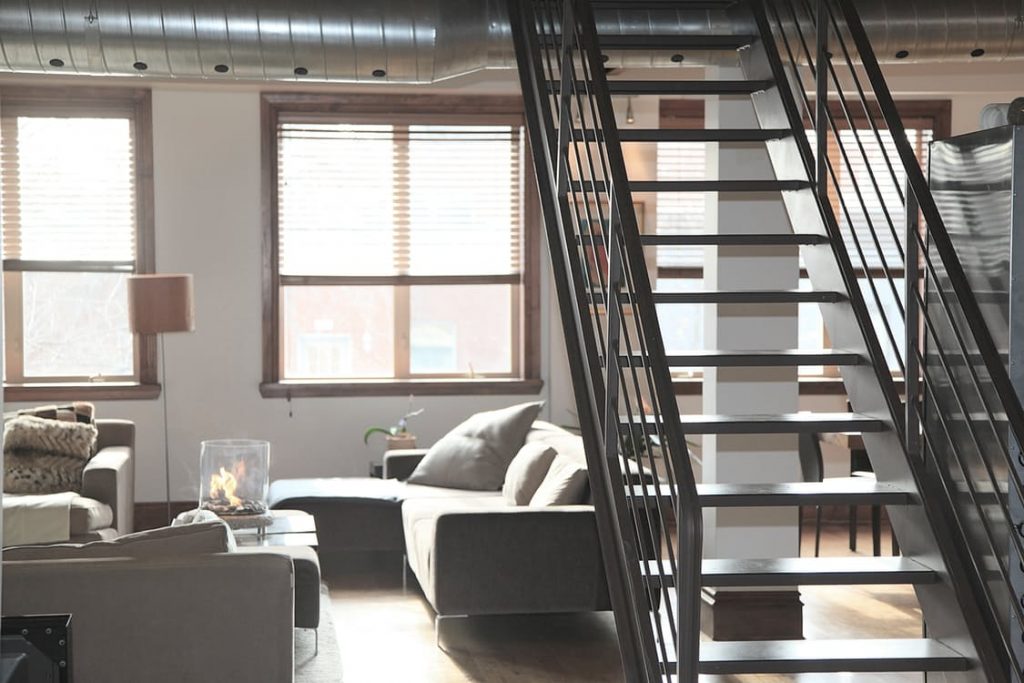Growing families often find that the walls of their home seem to be closing in on them. The house that once echoed is now full of happy children and hundreds of possessions that clutter each room. If you’re finding that your house appears to have shrunk, but the property market doesn’t look good for a move, what can you do? Would you extend? Build up, out, or down? Or would you be brave enough to rip it all out and start again with a floor plan that works better for your family?
All of these solutions to make a home a better fit are quite major renovations. They take time, and sometimes they take a lot of documentation and planning permission from your local authorities. But what they will all take a lot of is money. If you haven’t got a few thousand set aside, chances are you will need to borrow the cash to make these changes. Are you brave enough to add extra debt to your mortgage?
Of course, if you are brave enough to gut your home and start again, you have the opportunity to build your dream home. You can create the property you want without having to change neighborhoods. Your kids won’t have to move schools. And your commute to work won’t have to alter either. Sure, it’s a lot of upheavals that could span for months. But when it’s done, you’ll have the satisfaction of knowing you built the home that you’ll raise your kids in.
So where do you start? Have a plan. A really good plan! Don’t just go to bat with the first draft though. Give it time to simmer and stew and develop and grow. You’ll come across pictures and brochures full of lovely ideas that you’ll want to include. You’ll find inspiration in blogs, magazines, and throughout social media. Give yourself a few weeks to digest your most important decisions before you commit to them. You don’t want to end up disappointed with the finished result.
One of the first things you need to do is calculate your affordable budget. This may be a disappointing figure at first, but you may be surprised with just how much you can do. You might be able to cut some costs by project managing all the works yourself. And if you take on some of the unskilled labor, you can save a little more. Alternative accommodation will be cheaper if you’re willing to impose on friends and family for a while. Make a detailed spreadsheet, and be sure to triple check your figures.
Hiring contractors could be tougher to do than you might think. Before you sign any documents, consider asking friends and family for contractor recommendations. If they come up empty handed, then look at respectable sources for good contractors. You can look at Electrical Connection details online to get an idea of how to find the people you need. If you’re looking for a general builder, ask for a few quotes to compare prices. You might prefer a specialist plasterer for a high-end finish but this could cost more.
It may take a few weeks to get all the quotes together to finalize your budget. Once you know how much you’re going to spend, and you know where the money is coming from, it’s time to start. You may need to notify your local authority about the works you want to carry out. Some contractors fill out these documents for you. Once you’ve been in touch and you know what they need, you can make sure you’re in a position to conform to their requirements. Now the paperwork is in place, it’s time to clear the rooms.
Some families try to stay in their homes while these works are taking place. It depends on how much of a problem the extra dirt and dust will be. If your kitchen is being completely ripped out, you need to consider how you will hygienically prepare meals. It’s possible to live upstairs while the downstairs work is taking place, and vice versa. But will this be practical for pets and the children?
There will undoubtedly be times when you feel quite stressed and fed up with the project. The more you are involved with it, the more physically draining it may be. You may have to sacrifice quality time with the kids to get through some of the work yourself. And you may feel like you’re spending more hours cleaning than you have your entire life! Appliances will be inaccessible, your power and water may not always be available. And you’ll be desperate for it all to end. Budget for a couple of weekends away as you need them. This can be just the respite you need.
One of the things that will keep you going during all the renovation works is your vision of the finished product. You might be imagining beautiful rooms for the kids. Maybe you can’t wait for all that extra storage? And the open plan living area is going to be so much more practical. Many DIY stores offer free plans that help you visualize your dream home. They can populate the 3D drawing with the furniture and fittings you select to buy from them. Remember, this is a sales tool too. You don’t have to buy the things they’re detailing. You can change each item, or just start again.
As the end of the works draw near, don’t be afraid to push for a finer finish if you think the attention to detail is lacking. You will, of course, likely pick up the slack here. We’re all more picky about our own homes! By now you may be ready to start buying the paint for the final touches. Perhaps you’re ready for a fresh palette for your new look home? Getting stuck in with the paint roller is one of the most satisfying parts of a renovation. You know this is the last bit to do before the furniture comes back in. And after that? You can actually live in the dream home you built!



This is good practical information. I think many people are so focused on the technicalities of the renovation, they may not be thinking about all these things. I love to see before and after photos, some are truly boggling the transformation. I don’t know how much it costs to hire an architect, but the ones who do some major changes that have one are amazing. I’ve seen where people underestimate the costs, and have had to sell their home in the middle of renovations as they ran out of money – need to be very careful.